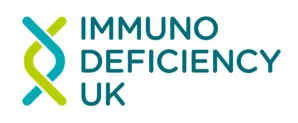Why we need SCID newborn screening
Eight years of waiting is long enough
Professor Bobby Gaspar, an expert in paediatrics and immunology at Great Ormond Street Hospital (GOSH), started the journey of seeking approval for the implementation of a newborn screening programme for Severe Combined Immunodeficiency [SCID] over six years ago. In spite of numerous meetings, reports, evidence reviews, a consultation process and two financial assessment reports, the latest of which confirmed that SCID screening would be cost effective, the PID community is still waiting for full implementation of a screening programme. This is a condition for which there is a 95% chance of a cure if it is detected early.
Please take a look at the stories below which highlight why newborn screening for SCID is so important.
Pilot screening programme
In January 2018 Public Health England (PHE) started the process of setting up a pilot screening programme and Immunodeficiency UK has representation on the SCID project Steering Committee and Patient, Information and Training group. This evaluation study is necessary before a nationwide programme can be launched.
In November 2018 Immunodeficiency UK were informed that funding for the evaluation has not yet been confirmed by the Secretary of State for Health and Social Care. This means that the project risks stalling. In response Immunodeficiency UK is exerting pressure to ensure the necessary funds are ring-fenced. You can find a copy of our letter to the Secretary of State for Health and Social Care here.
Childrens’ lives matter
This web page gives the stories of children whose SCID condition wasn’t detected early enough resulting in heartbreaking, tragic consequences and of other children who were luckily identified and have benefited from a bone marrow transplant.
Immunodeficiency UK would like to thank the brave, bereaved parents who agreed to share their story with us and we encourage you to sign this petition set up by Susie Ash, mum to James, whose story is told below.
Updated September 2019





